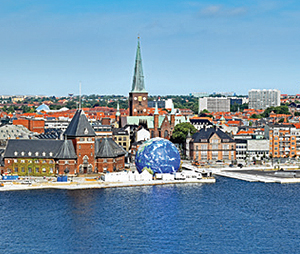 Digitalisation is the lever for an integrated and efficient energy system with district heating as its natural cornerstone. It will not happen on its own accord but Danish experiences are proving that green business and black numbers are not mutually exclusive and European initiatives are an indicator for much more to come.
Digitalisation is the lever for an integrated and efficient energy system with district heating as its natural cornerstone. It will not happen on its own accord but Danish experiences are proving that green business and black numbers are not mutually exclusive and European initiatives are an indicator for much more to come.
Let us - just for a second - put aside the fact that digitalising district heating will enable a greener, more integrated energy system utilising renewable energy sources and surplus heat to decarbonise the heating of buildings. Digitalisation is also simply good business.
The total savings potential from digitalisation in the Danish utility sector is estimated at between 360 million and 1.3 billion euros. These savings will come from using data-based transparency to reduce losses, increase operational efficiency, improve utilisation and maintenance of the distribution network as well as streamline the heavy investments in this area.
There is no shortcut to realising this potential - and it will not happen automatically. For district heating utilities, reaping the financial benefits from digitalisation is a process that begins with them investing both their time and money in digital tools that enable them to change the way they do things today.
COLLABORATION IS KEY
Few will argue that optimising production and distribution based on real-time data is not more efficient than using theoretic models. But for most utilities it is less obvious exactly where, how and how much savings can be made - and that is a prerequisite for any investment. Closer collaboration between utility experts and technology providers is key to solving this challenge.
In an ongoing project with one of the world's biggest district heating utilities, AffaldVarme Aarhus (AVA), operations staff from the utility therefore work together with data specialists from Kamstrup to prove detailed business cases for areas where digitalisation is expected to hold financial value.
One of these many areas is leak detection based on smart meter data analytics rather than aerial drone thermography. The project will provide fact-based proof to validate AVA's potential investment in this area as well as give important insight with regard to renovation of their distribution network.
DIGITAL TRANSFORMATION UNDERWAY
With its strong history in district heating, Denmark is amongst those leading the way for digitalising this sector. However, the potential is just as relevant in other district heating countries - and the digital movement is making headway fast.
Initiatives such as Euroheat and Power's recently released Digital Roadmap for District Heating & Cooling are generating all new awareness and insight into the possibilities, challenges and potential in digitalisation. Combined with real-life showcases like the AVA project that produce quantified results, this is what will pave the way for digital utilities with bottom lines that are as green as they are black.
Contact information
Web: www.kamstrup.com